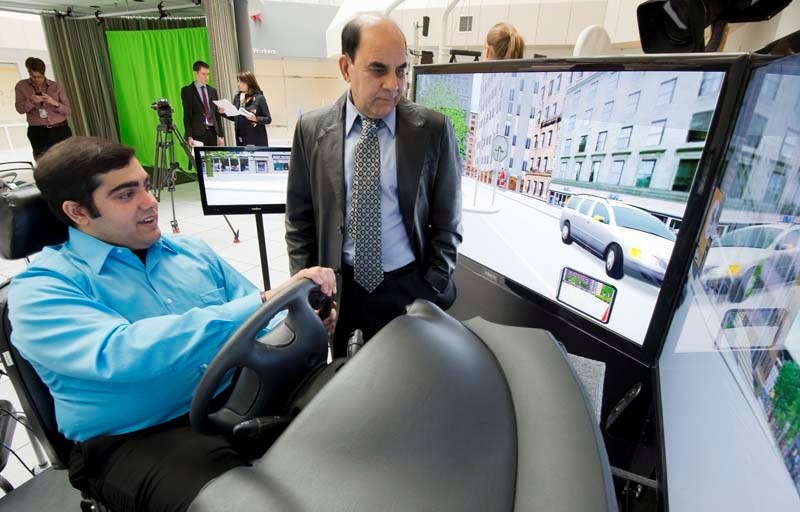Talking using a hands-free device such as Bluetooth while driving may be legal, but it doesn't make it any less dangerous than talking on a cellphone, says new University of Alberta research.
The pilot study found that drivers talking on a hands-free device while behind the wheel made significantly more driving errors – such as speeding, changing lanes without signaling and crossing the centre line – compared with just driving alone.
Data was collected from 26 male participants aged 18 to 45 who completed a driving course using a driving simulator. They drove the course for four minutes without distraction, and then did the course a second time while holding a two-minute conversation on a hands-free device. Lead researcher Yagesh Bhambhani said there was a 20- to 50-per-cent increase in driving errors from the control condition to the distracted condition.
"What is even more disturbing is the severity of those errors," he said, adding that one participant actually had an accident during the driving simulation.
Using near infrared spectroscopy – a non-invasive technique that tracks real-time brain activity – the study also found participants had increased activity in the decision-making portion of their brain. Blood flow to the brain and heart rate also spiked while using a hands-free device.
"We were not able to establish a strong correlation between the increase in driving errors and the increase in the brain activity," explained Bhambhani, referring to small sample size and only tracking a single portion of the brain as possible study limitations. He noted that monitoring multiple areas of the brain during distracted driving would be good opportunities for future research.
Researchers hope the findings of this investigation will contribute to the growing body of research that reflects the dangers of distracted driving.
"People using a handheld phone while driving were about four times more likely to be involved in a crash," said Mayank Rehani, the graduate student who worked on the study as part of his masters thesis. He referred to findings from several studies and noted one in particular from 2008 that found driving with a handheld phone is equivalent to driving at the legal blood alcohol limit.
"A misconception about hands-free is that it's a safe alternative. What does guarantee your safety is to focus on the road while driving," he said.
Cpl. Don Murray with St. Albert RCMP's traffic unit explained some research has found that hands-free devices can be even more dangerous than handheld because of the level of cognitive distraction.
"Hands-free devices free you from having to physically manipulate the device, but they don't reduce your need to think about the conversation. It's not the physical act, but the mental act that makes it dangerous," he said.
Who's doing it
Another recent study from the University of Alberta has determined characteristics of those that are most likely to use their cellphones while driving.
The survey found that men outnumbered women by almost 10 per cent in phone use while driving and the largest proportion of offenders in both groups fell in the 35 to 44 age category.
Rates of cellphone use while driving increased with income category, with those earning over $100,000 per year being the top users. The majority of distracted drivers had also completed post-secondary education.
Sociology researcher Abu Nurullah noted in his previous work that one's perception of risky behaviour and social pressure from friends and family are important factors for putting the brakes on this risky activity.
Alberta introduced distracted driving legislation in 2011 where offenders can receive a fine of $172. Unlike other countries such as Australia, there are no demerit point reductions.




